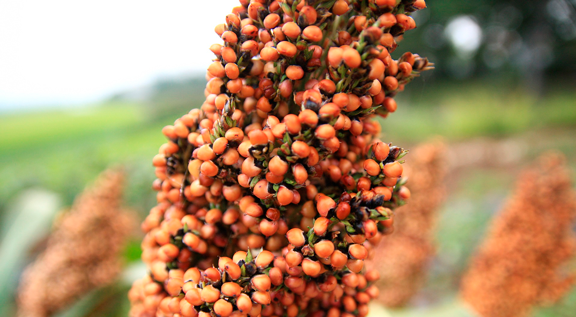
Image: Pixabay
In Pará, unlike most producing regions, there was an increase in the sown area and an increase in average productivity in relation to the previous cycle. Conditions were favorable to the crop in the most critical phases of development, allowing for better production than last season, reaching 54.9 thousand tons harvested.
{module Form RD}
In Rio Grande do Norte, sorghum cultivation with dual aptitude has become one of the main bulky food alternatives for livestock, especially cattle, since the majority of the plant's production goes to animal feed (forage). As the survey only considers grain sorghum, an area of 600 hectares is estimated in the current harvest, thus maintaining stability. On the other hand, the estimated grain production was 16.7% lower than the 2020 harvest, reaching 500 tons.
However, due to the price of corn, the demand for silage for animal feed is greater, for this reason, the ease of management and low production make it worth using or selling part of the crops for silage. As a result, final production was lower than expected. Overall, a reduction in total production is estimated compared to 2019/20, due to adverse weather conditions and their impacts on the average crop yield. Thus, even with an increase in the planted area, the prospect is to obtain a volume 5.2% lower than in the previous cycle, remaining at 148.2 thousand tons harvested.
In Mato Grosso, the sorghum harvest ended in August, with the remaining 20% completed this month, and even this crop, which is usually more resistant to dry weather, suffered from drought this season, and recorded an average productivity of 2,670 kg/ha, 9.9% lower than the 2,964 kg/ha obtained in the last cycle. Not even the largest investments applied to sorghum cultivation were enough to reverse the loss. As a substitute for corn in the formulation of animal feed, its prices have skyrocketed at the state level, given the restricted supply of this input, often breaking with the traditional equalization of around 80% in the price of corn. These market conditions encouraged the increase in area, the amount of which was 49.3 thousand hectares, 5.7% higher than last year. At this moment, sales already exceed more than half of the harvested production.
In Mato Grosso do Sul, the climatic problems that the crop experienced during the cycle directly impacted the grain yield. However, the significant increase in the area sown in this cycle completely changed the expected outlook for the harvest. Approximately 68% of the areas have already been harvested, and are basically represented by crops established in the central-north region of the state. In the center-south, where crops are delayed, the operation will basically be carried out in September. In general, the forecast is for production to be 89.4% higher than 2019/20, expected to reach 68.2 thousand tons.
In Goiás, the lack of rain reduced the potential of crops, thereby reducing the productivity and quality of grains. Furthermore, due to lack of warehouses, logistics costs mean that producers have to sell their products on the farm. An increase of 0.8% in the planted area is estimated, and a decrease of 18.1% in productivity and 17.4% in production in relation to the previous cycle.
In the Federal District, the cultivated area decreased by 1% in relation to the previous cycle. The crops are in full harvest, as 50% has already been harvested. Average productivity is estimated at 4,240 kg/ha, 14.9% lower than the 4,980 kg/ha obtained in the previous harvest, a reduction caused by the lack of rain in the flowering and grain filling stages. Thus, production could reach 41.6 thousand tons, 15.6% lower than the production of the previous harvest.
In Minas Gerais, sorghum areas are estimated to have reduced by 2.4%. The area of 195.9 thousand hectares has an expected productivity of 2,901 kg/ha, 25.6% lower than the previous harvest. Estimated production is 27.4% lower than the 2019/20 harvest. Despite being a crop with greater resistance to climate, the effects of water deficit and frost indicate potential for reductions until the end of the harvest. The harvest stage for sorghum in the state is 74%.
In São Paulo there was stability in the allocation of area for planting the crop, however the average productivity should be well below the expected potential due to the climatic adversities recorded during the cycle (lack of rain, low soil moisture and frost). Therefore, the expected final volume is 27.3% lower than that obtained in 2019/20, with an estimated 25.3 thousand tons harvested.
By: Eliza Maliszewski | agrolink















